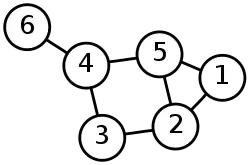
In mathematics and computer science, graph theory is the study of graphs: mathematical structures used to model pairwise relations between objects from a certain collection. A "graph" in this context refers to a collection of 'vertices' or 'nodes' and a collection of edges that connect pairs of vertices. A graph may be undirected, meaning that there is no distinction between the two vertices associated with each edge, or its edges may be directed from one vertex to another. The graphs studied in graph theory should not be confused with "graphs of functions" and other kinds of graphs.
Theorems
Ramsey's Theorem is the solution to the Party Planner Problem
Schur's Theorem is a central theorem in Ramsey theory and combinatorial number theory that is concerned with arithmetic progressions.
Van der Waerden's Theorem is another theorem that is concerned with arithmetic progressions on the integers.